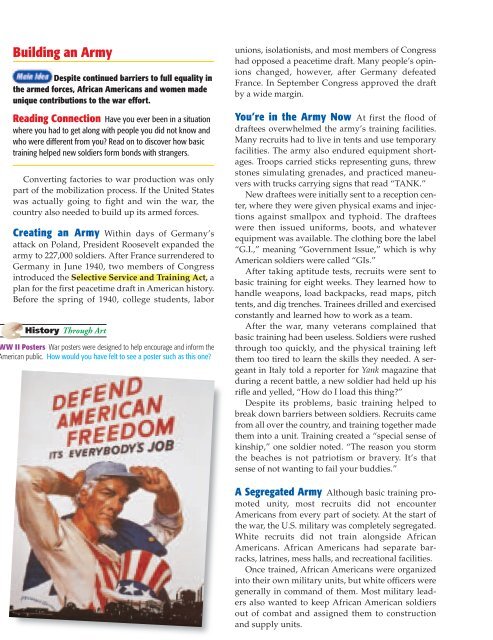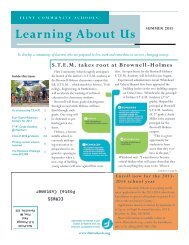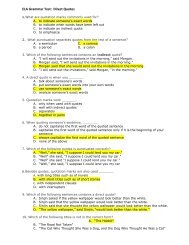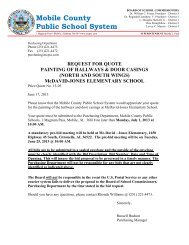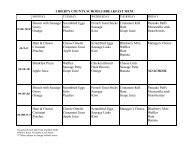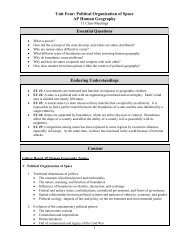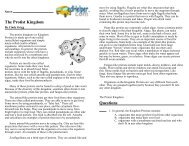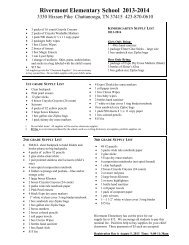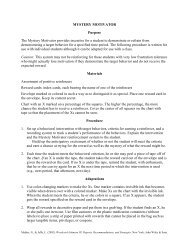Chapter 12: America and World War II, 1941-1945 - Georgia ...
Chapter 12: America and World War II, 1941-1945 - Georgia ...
Chapter 12: America and World War II, 1941-1945 - Georgia ...
Create successful ePaper yourself
Turn your PDF publications into a flip-book with our unique Google optimized e-Paper software.
Building an Army<br />
Despite continued barriers to full equality in<br />
the armed forces, African <strong>America</strong>ns <strong>and</strong> women made<br />
unique contributions to the war effort.<br />
Reading Connection Have you ever been in a situation<br />
where you had to get along with people you did not know <strong>and</strong><br />
who were different from you? Read on to discover how basic<br />
training helped new soldiers form bonds with strangers.<br />
Converting factories to war production was only<br />
part of the mobilization process. If the United States<br />
was actually going to fight <strong>and</strong> win the war, the<br />
country also needed to build up its armed forces.<br />
Creating an Army Within days of Germany’s<br />
attack on Pol<strong>and</strong>, President Roosevelt exp<strong>and</strong>ed the<br />
army to 227,000 soldiers. After France surrendered to<br />
Germany in June 1940, two members of Congress<br />
introduced the Selective Service <strong>and</strong> Training Act, a<br />
plan for the first peacetime draft in <strong>America</strong>n history.<br />
Before the spring of 1940, college students, labor<br />
History Through Art<br />
WW <strong>II</strong> Posters <strong>War</strong> posters were designed to help encourage <strong>and</strong> inform the<br />
<strong>America</strong>n public. How would you have felt to see a poster such as this one?<br />
unions, isolationists, <strong>and</strong> most members of Congress<br />
had opposed a peacetime draft. Many people’s opinions<br />
changed, however, after Germany defeated<br />
France. In September Congress approved the draft<br />
by a wide margin.<br />
You’re in the Army Now At first the flood of<br />
draftees overwhelmed the army’s training facilities.<br />
Many recruits had to live in tents <strong>and</strong> use temporary<br />
facilities. The army also endured equipment shortages.<br />
Troops carried sticks representing guns, threw<br />
stones simulating grenades, <strong>and</strong> practiced maneuvers<br />
with trucks carrying signs that read “TANK.”<br />
New draftees were initially sent to a reception center,<br />
where they were given physical exams <strong>and</strong> injections<br />
against smallpox <strong>and</strong> typhoid. The draftees<br />
were then issued uniforms, boots, <strong>and</strong> whatever<br />
equipment was available. The clothing bore the label<br />
“G.I.,” meaning “Government Issue,” which is why<br />
<strong>America</strong>n soldiers were called “GIs.”<br />
After taking aptitude tests, recruits were sent to<br />
basic training for eight weeks. They learned how to<br />
h<strong>and</strong>le weapons, load backpacks, read maps, pitch<br />
tents, <strong>and</strong> dig trenches. Trainees drilled <strong>and</strong> exercised<br />
constantly <strong>and</strong> learned how to work as a team.<br />
After the war, many veterans complained that<br />
basic training had been useless. Soldiers were rushed<br />
through too quickly, <strong>and</strong> the physical training left<br />
them too tired to learn the skills they needed. A sergeant<br />
in Italy told a reporter for Yank magazine that<br />
during a recent battle, a new soldier had held up his<br />
rifle <strong>and</strong> yelled, “How do I load this thing?”<br />
Despite its problems, basic training helped to<br />
break down barriers between soldiers. Recruits came<br />
from all over the country, <strong>and</strong> training together made<br />
them into a unit. Training created a “special sense of<br />
kinship,” one soldier noted. “The reason you storm<br />
the beaches is not patriotism or bravery. It’s that<br />
sense of not wanting to fail your buddies.”<br />
A Segregated Army Although basic training promoted<br />
unity, most recruits did not encounter<br />
<strong>America</strong>ns from every part of society. At the start of<br />
the war, the U.S. military was completely segregated.<br />
White recruits did not train alongside African<br />
<strong>America</strong>ns. African <strong>America</strong>ns had separate barracks,<br />
latrines, mess halls, <strong>and</strong> recreational facilities.<br />
Once trained, African <strong>America</strong>ns were organized<br />
into their own military units, but white officers were<br />
generally in comm<strong>and</strong> of them. Most military leaders<br />
also wanted to keep African <strong>America</strong>n soldiers<br />
out of combat <strong>and</strong> assigned them to construction<br />
<strong>and</strong> supply units.<br />
576 CHAPTER <strong>12</strong> <strong>America</strong> <strong>and</strong> <strong>World</strong> <strong>War</strong> <strong>II</strong>


